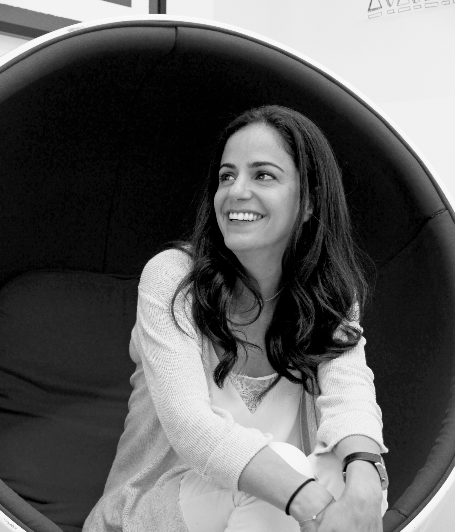KSA DIGITAL 2021 – ‘4 Social Trends We See Emerging In The Kingdom Of Saudi Arabia’
By: Ailidh Smylie, Strategy Director, Socialize

Between 2020 and 2021, social media users in Saudi Arabia surged from 25 million to 27.8million; an 8% YoY growth equating to 80% of the country now using social networks and messenger services. KSA has the highest Snapchat & Twitter penetrations in the whole world. Consumers on average spend 3 hours, 6 minutes a day on social media – way higher than the global average of 2 hours, 25 minutes.
So what makes this country so hyperconnected, and how can brands learn from this behaviour?
We’ve deep dived into KSA Digital202, published in partnership between We Are Social and Hootsuite, to understand the unique data patterns & behaviours in the Kingdom – highlighting x4 Key trends for 2021 and beyond:
TREND 1: Human Connection Drives Hyperconnection
A year of intermittent lockdowns has seen social media channel penetration for almost all platforms rise ahead of global trends; with the biggest increases seen on YouTube (+14.5%) Twitter (+13%) and Tik Tok (+12.8%) when comparing KSA Digital2020 and 2021 reports. We have also seen a rise of social accounts per head – with an average of 10.4 per person; 2 more than the global average – resulting in a whole lot of platforms needing to be scrolled through and maintained!
To understand their preference for platforms like Snapchat & Twitter – we can look at a few things. Starting with the country’s young average age – 32, and their high uptake of smartphone usage (98.7% of 16-64 year old). Then we add in the high percentage of expats (roughly 30%), as well as geographical barriers and cultural benefits of private platforms like Snapchat; we see that to KSA consumers – social is culture. Hyperconnectivity equals human connection in a country where physical connection can be more limited.
Brand Takeaway: Rather than getting distracted by the (big!) numbers – try asking first and foremost – why do we want to engage with our audience in the first place? Then – are they using social media in a particular way that will help unlock a two-way communication? Which platforms would be most relevant to their motivations? Finally – how can we use channels to achieve desired outcomes? And remember – you don’t need to use them all! In fact, cherry picking and strategizing per platform is key – for an audience that is truly platform fluid, using platforms in different ways and expecting unique outcomes.
TREND 2: Consumers Search Behaviours Change:
Between 2020 and 2021, we’ve finally seen the tipping point; in KSA, the preferred primary way to conduct brand research among internet users aged 16-64 is to refer to social media, with 60% using this channel, ahead of 58% who use search engines. No other channel is close in terms of use – in third place comes consumer reviews, which 38% of this group use to do brand research.
This could be a direct result of a distinct lack of ‘Arabic first’ search approaches from brands, favoured instead by ‘Arabic first’ social approaches, which result in richer Arabic social content and search strategies primarily in English. It’s also likely due, again, to a young population who spend increasingly longer amounts of time on social media – morphing the various platforms together to get exactly what they need without having to go elsewhere.
Brand Takeaway: When we say ‘social search’, it’s important to remember consumers don’t just actively visit brands’ social pages. Search is conducted in numerous ways via: hash tags, explore tabs, shopper tabs, Instagram Reels, vloggers/influencers & ads served. Brands must adopt a multi-faceted approach, so they’re visible and available in the right spaces for your consumer. This also allows for organic frequency – the more they see you across different channels in different forms, the stronger your brand recall can be.
TREND 3: Gaming and Social Media Become One:
It’s no secret – gaming is the word on all marketers minds and H2 briefs at the moment – with KSA no exception. 91% of internet users aged 16-64 in KSA report they play games on any device. That. Is. HUGE. Console play in particular has grown in the Kingdom, from 19% to 35%, for an extra 25 minutes per day, when comparing our Digital2020 + Digital2021 reports.
So why the sudden shift, and why now are brands starting to take notice? Peter Mazloumian, Head of SLZ Gamez, puts it succinctly: ‘COVID-19 made a gamer out of most of us. With a new-found abundance of time at our disposal, we started seeking new ways to keep ourselves entertained.’
Brand Takeaway: Our 3 ‘golden rules of play’ are:
- Read the Room – when a brand is playing on ‘new turf’ we need to respect existing online cultures; offer more than self-serving product placements, instead use time to create a positive impact in the communities.
- Not just any ad – the creative has to be crafted with the spirit of gaming at its core; born from truths that gamers can connect with, and executed bespoke to platforms & communities.
- Play like a streamer – take Twitch for example. Whether bringing gaming characters to life or ‘raiding’ streams of smaller channels for a good cause – always remember the platform purpose, and allow brands to enter the lives of gamers by simply playing alongside them.
TREND 4: Everyone is shopping online – no matter their age
The growth of ecommerce in KSA has been accelerated by COVID-19 – no surprise there! With this, we’ve seen the use of shopping apps increase from 55% to 68% YoY in KSA, and an annual growth of 38% in the consumer products ecommerce market.
Yet, the surprising take away from the data is that internet users in Gen Z (age 16-24) are no more likely to use ecommerce than Millennials (25-34) or even young Gen X – in fact each age range from 16-54 have similar e commerce adoption, and we only really see a drop off with consumers aged 55+:
Brand Takeaway: All consumers shop online – so brands need to be where the consumer is, which in KSA – is everywhere. A focus on ‘aggressive’ acquisition of new customers & collection of 1st party data will set brands up nicely in anticipation of the much ‘feared’ new cookie laws looming . Measurement, as always, will be key to understanding how to strategically, and often very quickly, pivot an approach, as well as keeping up to date with the rapidly changing ecosystems/ inventory available to continually optimize the ever-fluid consumer journey.





